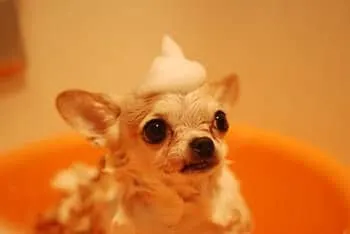GREAT STUFF™ foam is true to its name when it comes to home improvement. It’s great for sealing drafts to help with energy
I have used Great Stuff foam for years. It is one of my all-time favorite tools for increasing the energy efficiency of a home. However, expanding spray foam must be handled with care and can cause severe health problems if not used correctly.
Using Great Stuff expanding foam around pets – It’s best to remove pets from the area while you work, but accidents can happen, and it’s possible that
The below guidelines are based on documented information from reputable sources. Links to sources are included for reference.
Is GREAT STUFF™ Foam Dangerous To Pets?
Yes. However, the hazards presented by wet foam are considerably more dangerous than when it has dried. Wet, uncured foam has toxic fumes that can cause a grown man to stop breathing without proper ventilation. Dogs, for example, are fifty times as sensitive to smells as humans, and the toxic fumes can severely irritate the respiratory system, cause anaphylaxis, and result in permanent decreased lung function.
Once the foam is cured, it is non-toxic. The danger for pets from eating cured foam is a possible intestinal blockage. These can range from very minor to very serious, depending on the size and amount consumed.
Wet foam is also dangerous to the outside of your pet’s body. If they brush up against foam before it dries, it will be almost impossible to remove; especially from sensitive areas.
If your pet eats foam before it has cured, it can cause electrolyte imbalances and cardiac dysfunction. Uncured foam can also expand some in the digestion tract, although it will be almost fully expanded within ten seconds of application. GREAT STUFF™ foam can take up to twenty-four hours to fully cure in a well-ventilated area, so be aware that foam may be hard, but still toxic.
How Do I Get GREAT STUFF™ Foam Out Of My Pet’s Fur?

The beauty of spray foam is that it creates an airtight bond almost instantly after application. However, this means you must act very quickly to remove foam if
Acetone is the easiest way to remove wet foam, but keep in mind that dogs are incredibly sensitive to smell. Try to keep their nose as far away from the area as possible, and use the least amount of acetone needed to remove it successfully. Once it is removed, immediately clean the area with mild soap and water to remove the acetone smell.
You can also try rubbing petroleum jelly on the area, and covering it with plastic wrap. Let it sit for an hour, and then gently tease the foam from your pet’s fur. Cut the remaining foam out with a pair of scissors.
If the foam has come into direct contact with your pet’s skin, acetone may be too irritating to remove it. If you’re unable to completely remove it, then you will have to wait for the foam to wear off as the skin cells naturally slough off.
What Do I Do If My Pet Ate GREAT STUFF™ Foam?
First, determine if the foam was fully cured. If not, seek medical attention immediately. Spray foam contains isocyanates, which can cause severe reactions if ingested.
If your pet has eaten cured foam, watch them closely for signs of an intestinal blockage:
- vomiting
- bloating
- dehydration
- lack of appetite
- diarrhea
If you suspect your pet has a blockage from eating cured spray foam, take them to a vet. Blockages can prevent waste material from passing through the digestive system, and can restrict blood flow to the intestines which can cause tissue death.
Your vet will either perform an endoscopy or an x-ray to determine where the blockage is located. Depending on the size, they may wait for it to pass, or remove it surgically.
Who Should I Contact If My Pet Ate GREAT STUFF™ Foam?

If your pet ate uncured foam, contact your vet immediately. If you’re unable to contact your
- American Society for the Prevention of Cruelty to Animals – Poison Control
- Dupont Customer Service
- Pet Poison Helpline
The consequences of contacting spray foam can be debilitating for
And don’t forget; you should always wear proper PPE while applying toxic materials, and keep children away from the area until fumes have dispersed and everything has cured. Always follow proper safety precautions as you make improvements to your home.
For more information on using Great Stuff foam to improve the energy efficiency of your home, read Common Questions On Air-Sealing A Home.
Wondering if Great Stuff foam can be used for waterproofing? Read Is Great Stuff Expanding Foam Waterproof? I asked Dupont!
As a homeowner, I am constantly experimenting with making the structure of my house more energy-efficient, eliminating pests, and taking on DIY home improvement projects. Over the past two decades, my family has rehabbed houses and contracted new home builds and I’ve learned a lot along the way. I share my hard-learned lessons so that you can save time and money by not repeating my mistakes.


Leave a comment
You must be logged in to post a comment.